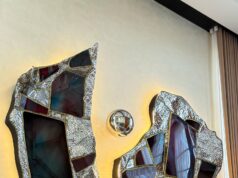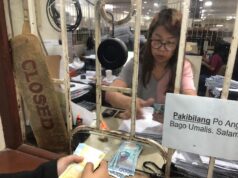As usual, Morales won the nod of those present in saying that for the longest time that Clark Air Base and now Clark Freeport is located in the territory of Mabalacat, this is the only time that the municipal government has really asserted its presence inside the ecozone.
The establishment of the municipal hall extension is not only a showmanship of Morales leadership as a progressive mayor, but likewise a statement of the municipal government’s presence as home to the Clark Freeport Zone. About 90 percent of Clark’s land is in the territorial jurisdiction of Mabalacat.
Also, the 458-sq meter extension office will be dedicated to assist the Clark locators securing permits and other papers with the municipal government. “It was built for their convenience and to uplift the standard of services of our local government unit,” the mayor said. He added that it will provide access for the prompt remittance of the locators to the host municipality of their two percent gross earned.
The establishment of the extension office is also a proof of Mabalacat’s partnership with the Clark Development Corp. (CDC). Among all members of the Metro Clark Advisory Council (MCAC) with seven LGUs as members, Mabalacat is the most blessed since it is the sole beneficiary of the two percent gross earned as provided for under the amended national laws. Being the host municipality to majority of the Clark locators, the Mabalacat LGU enjoys this privilege.
During his brief speech last Nov, 25, Morales thanked the CDC leadership led by President and CEO Benny Ricafort. “The CDC and the local government of Mabalacat had long been partners in the development of the Clark Freeport Zone and we will sustain this long-standing relationship that is most beneficial to residents of Mabalacat and Clark investors,” the mayor said.
I can’t add more to what the mayor said. Indeed the growing partnership of the public sector with the private organizations is a positive development for Pampanga. I gave the same salute to Sir Benny Ricafort for opening the door of the Clark Freeport Zone to the NGOs and private sector groups such as ADCL, Pamcham, MACCI and CILA. These organizations are now officially members of MCAC and are now part of the drafting of policies for Clark’s development.
It is only under Sir Benny’s term that CDC has welcomed the private sector to participate in the development talks for Clark Freeport Zone.
The charming and smart CDC president also has a soft heart for the promotion of culture and arts. Another historic event will unfold inside the former US base as the CDC recently provided the venue for the upcoming 5th National Sunrise Festival.
The national art festival, organized by the Maharlika Artists and Writers Federation (MAWF), will be held at the Clark Freeport Zone Picnic Grounds from November 28 to 30. With just short notice, Sir Benny approved the request. The festival was originally set in Tabun, Mabalacat but due to the growing number of participants, the organizers decided to transfer it inside the zone. For the first time, a national art festival that will be participated in by revered artists from various regions as far as Mindanao will commune at Clark and express and share their cultures with the Kapampangan people.
Deo Palma, MAWF national coordinator, said the concept of the festival is to bring together different artists and writers from various cultural communities nationwide to promote a culture of peace through arts and literature.
“We called it Sunrise because the sunrise projects progress, peace and hope. Sunrise also symbolizes universal spirituality that speaks of humanity as one and indivisible regardless of race and color,” Palma said.



